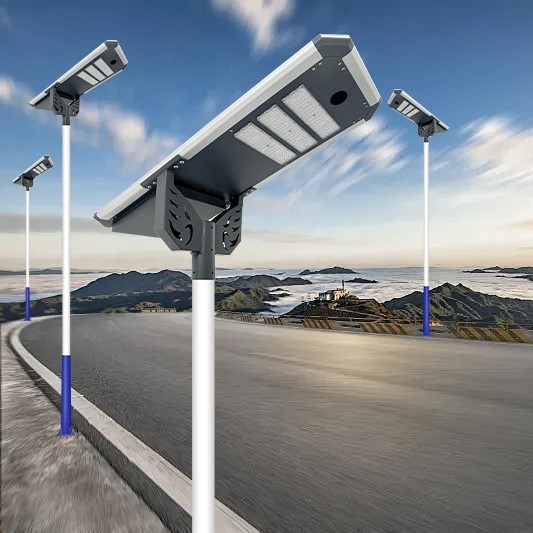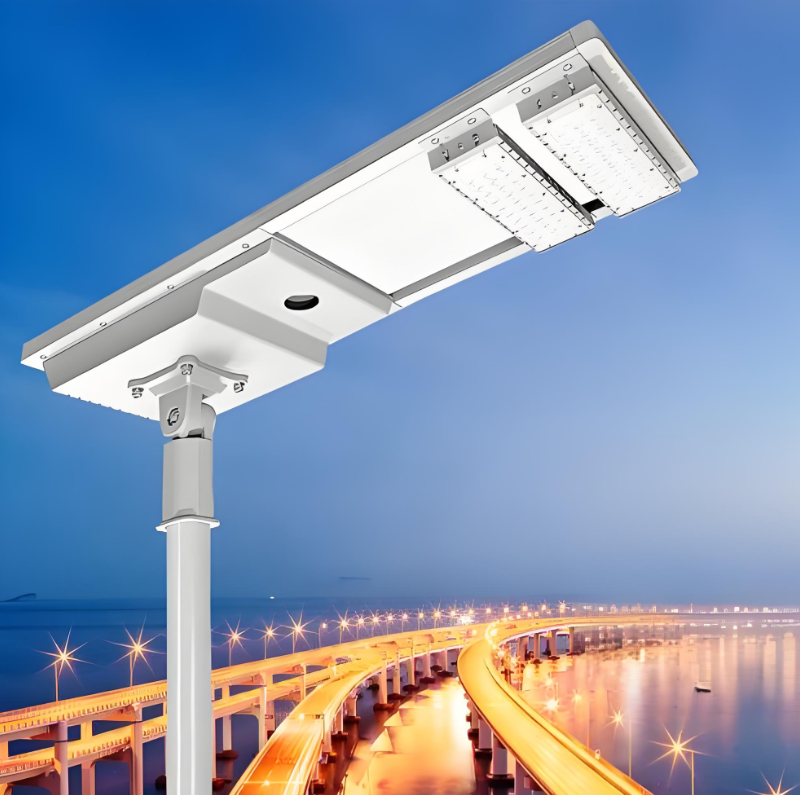Public works departments are under constant pressure to reduce costs while improving service quality. Solar street lighting for public works offers an eco-friendly, low maintenance, and long lifespan solution that directly addresses these challenges. Also known as sustainable outdoor lighting, this technology delivers energy savings, reliable performance, and reduced carbon emissions.
By adopting solar-powered LED street lights with long-lasting components, municipalities and agencies can comply with green building standards and reduce their operational footprint. Unlike traditional grid-powered lights, these systems operate independently, minimizing power costs and infrastructure expenses.
Rising Energy Costs for Public Infrastructure
Traditional street lighting is one of the largest contributors to public energy bills. Municipal budgets already face increasing strain from inflation, fuel price hikes, and maintenance costs.
Switching to eco-friendly solar street lighting can reduce electricity expenses by up to 70%. This significant reduction helps free up funds for other critical infrastructure projects. Over time, the cost savings accumulate, turning the lighting system into a self-sustaining investment.
High Maintenance Burden on City Lighting Systems
Public lighting systems often require frequent repairs due to cable faults, lamp replacements, and corrosion. In areas with harsh weather, this problem worsens.
Low maintenance solar lights use corrosion-resistant materials, sealed LED modules, and smart controllers that reduce physical intervention. Maintenance cycles can be extended from quarterly to once every few years, saving both labor and materials.
Environmental Compliance & Sustainability Goals
Many public works departments now operate under mandates to meet carbon reduction targets. Switching to eco-friendly street lighting supports these goals by eliminating grid dependency and using renewable energy.
With integrated solar panels and long lifespan LED street lights, carbon emissions from lighting are reduced to near zero. Additionally, many models are RoHS-compliant, meaning they are free from hazardous substances like lead and mercury.
Poor Lighting Reliability in Remote or Rural Areas
Some public works projects are located far from urban power grids, making electricity supply unreliable. Frequent outages cause safety concerns and disrupt services.
Off-grid solar street lighting operates independently of the grid. With battery storage and smart energy management, lights remain functional even during extended cloudy periods. This ensures consistent lighting for rural roads, parks, and public facilities.
Long-Term Budget Planning Challenges
Budget planning for lighting often becomes unpredictable due to fluctuating energy prices and repair costs. Traditional systems require ongoing investment, with no clear end to the expense cycle.
Long lifespan solar lighting provides predictable cost forecasting. Once installed, operating expenses remain low, and replacement cycles are measured in decades, not years.
Technical Solutions Backed by Data
-
High-Efficiency Solar Panels – Latest monocrystalline technology with up to 23% conversion efficiency.
-
Long-Life Lithium Batteries – Rated for 5,000+ charge cycles, providing over 10 years of service.
-
LED Lighting Modules – 50,000+ hour lifespan, equivalent to over 11 years of nightly use.
-
Smart Control Systems – Adaptive dimming and motion sensors reduce energy use by up to 40%.
-
Weatherproof Design – IP66-rated enclosures protect against dust, rain, and corrosion.
These features are tested to international standards, ensuring durability in both urban and remote environments.
Why Public Works Should Transition Now
Every year of delay means lost energy savings and higher maintenance costs. Solar street lighting for public works not only supports environmental initiatives but also improves operational reliability and community safety.
By visiting our product category, public sector managers can explore models tailored to specific project needs.
Conclusion
The benefits of eco-friendly, low maintenance, long lifespan solar street lighting extend far beyond cost savings. From meeting sustainability targets to reducing operational burdens, this technology is a practical, future-proof investment for public works projects.
As cities and rural communities continue to face budget and environmental pressures, adopting solar-powered lighting is one of the fastest, most impactful steps they can take.



